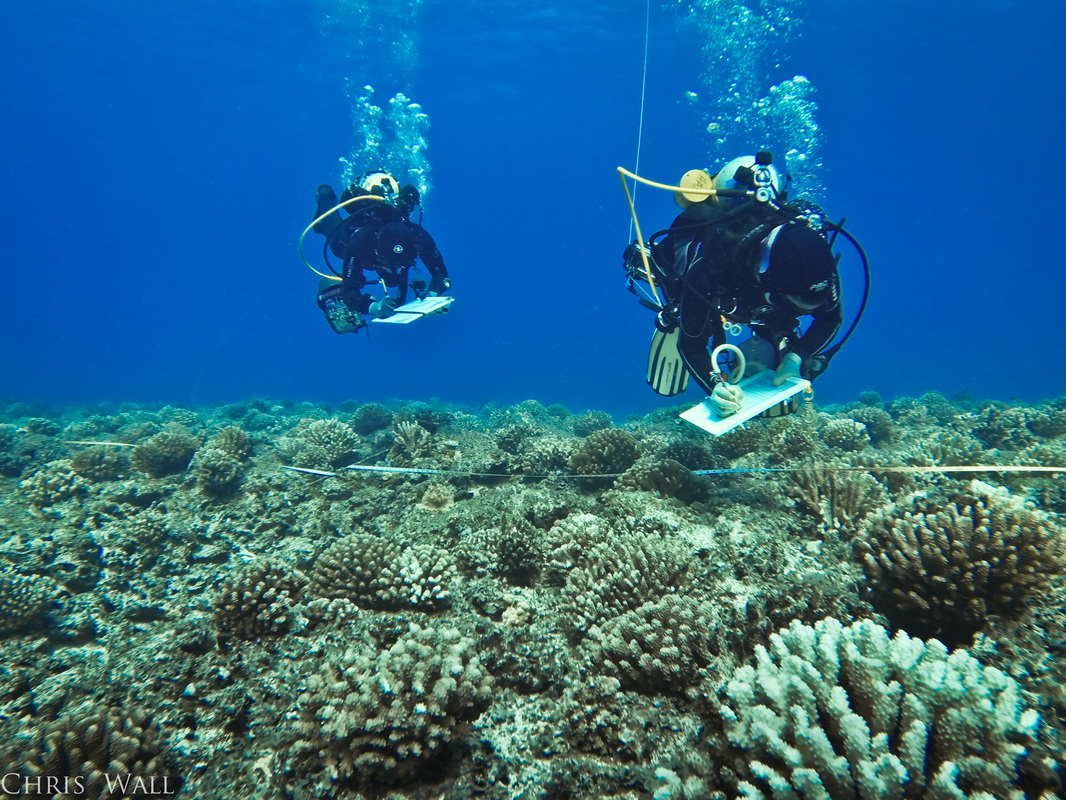Corals are amazing organisms that have prospered in the shallow, nutrient poor seas of the tropical and subtropical oceans. These animals, along with their symbiont algae have built the massive calcified structures and architechture that defines the ecosystems that bare their names. Coral reefs are presented with many challenges in the Anthropocene--the epoch of man--and as coral ecologists we study how the physiology and genetics of corals change in response to changing environmental conditions; how corals are affected by disease and pathogens; and how the 3D structural nature of reefs (that is, the "rugosity" or architectural complexity of the reef structure) change through time due to biological and physical processes.
In the Monument, the Coral Health Team has explored numerous reefs, ranging in depth from 3 ft to 60 ft on the backreef and forereef of these remote islands and atolls. Over this range of depths and locations (windward, leeward), and weather conditions, the reefs can be strikingly different! At each location we assess a variety of ecological and physiological metrics, including: disease prevalence, coral bleaching percentages, coral benthic cover and species composition, and we collect water samples and coral samples to study the physiological ecology and genetic of the coral and their symbionts. Finally, we collect hundreds of high resolution images along the reef to generate a 3D mosaic model of the reef substrate so that we can understand the structural complexity of these reefs, and the species present, at this point in time. Pretty cool stuff!
Want to learn more? Check out the NOAA RAMP Papahānaumokuākea Marine National Monument research blog to see some great photos of the Health Team in action, and learn about the cool research our team has been conducting.
Studying Coral Health In Papahānaumokuākea
In the Monument, the Coral Health Team has explored numerous reefs, ranging in depth from 3 ft to 60 ft on the backreef and forereef of these remote islands and atolls. Over this range of depths and locations (windward, leeward), and weather conditions, the reefs can be strikingly different! At each location we assess a variety of ecological and physiological metrics, including: disease prevalence, coral bleaching percentages, coral benthic cover and species composition, and we collect water samples and coral samples to study the physiological ecology and genetic of the coral and their symbionts. Finally, we collect hundreds of high resolution images along the reef to generate a 3D mosaic model of the reef substrate so that we can understand the structural complexity of these reefs, and the species present, at this point in time. Pretty cool stuff!
Want to learn more? Check out the NOAA RAMP Papahānaumokuākea Marine National Monument research blog to see some great photos of the Health Team in action, and learn about the cool research our team has been conducting.
Studying Coral Health In Papahānaumokuākea


 RSS Feed
RSS Feed